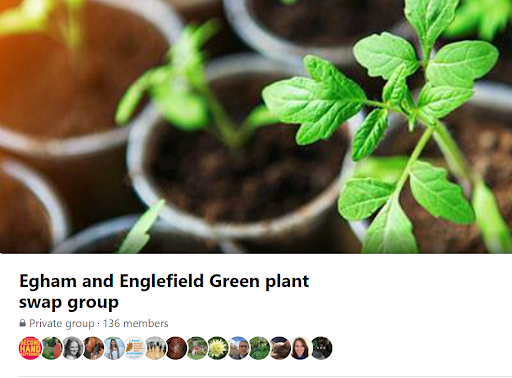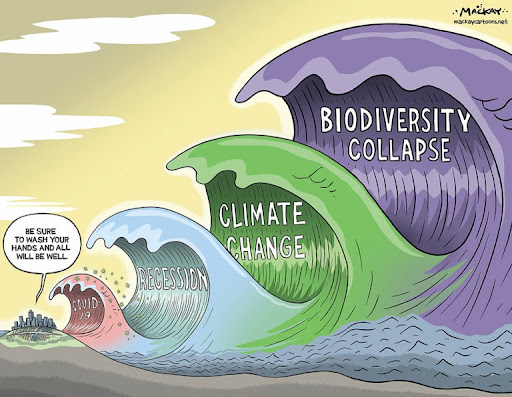The connection between food and storytelling
3. A social and environmental justice lens for food and storytelling
The Covid pandemic generated an explosion in food related issues and resulting stories. We saw in the news how supermarket shelves were being emptied of certain foods. Conversely, communities came together in novel ways to share seeds and seedlings, reclaim derelict land for food growing and support families that may have otherwise struggled to access fresh vegetables.


https://mackaycartoons.net/2020/03/18/wednesday-march-11-2020/
Yet, as the powerful cartoon by Graeme Mackay suggests, the Covid pandemic is just one of many, potentially greater, crises that humanity faces. Underlying all of these emerging crises are unsustainable and unjust systems i.e. we are confronted with issues of environmental justice. Environmental justice deals explicitly with addressing the unequal distribution of environmental benefits and burdens. Environmental benefits include being surrounded and having easy access to green spaces, natural resources, clean air and water, a tranquil soundscape and infrastructure that enables communities to cope with extreme weather events such as heatwaves, floods and droughts. Environmental burdens include exposure to pollution in the air and water, vulnerability to extreme weather events, excessive noise, and limited to no access to green spaces and natural resources in which, for example, to grow food.
Through an environmental justice lens, it is possible to see how low-income and minority groups are more likely than affluent people to live near toxic industrial facilities and waste disposal sites, live in areas with high levels of air pollution or exposed to flood-risk, and work in hazardous places. Exposure to hazards is aggravated by limited opportunities for these groups to be formally educated on environmental health issues and have access to decent levels of health monitoring and care. The result is that low-income and minority groups have significantly higher levels of disruption, disability, disease, and death resulting from exposure to environmental hazards. For example, Oxfam’s 2020 report, ‘Confronting Carbon Inequality', showed that the richest one percent of the world’s population are responsible for more than twice as much carbon emissions as the poorest half of humanity during the 1995-2015 period. Yet it is the poorest communities and young people who are increasingly experiencing the greatest impact of crises such as climate change.
So, what role can community food growing play in helping us not only confront these emerging crises and our vulnerability, but actually create a thriving and healthy environment? How do we ‘bounce forward’ from crises in ways that address environmental and social challenges?
